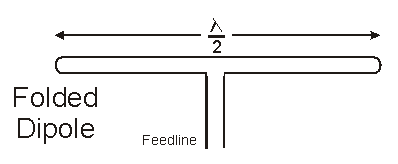- Joined
- Dec 14, 2016
- Messages
- 1,268
- Reaction score
- 575
- Age
- 54
- Location
- Saint Clair Shores, Michigan, USA
Was looking over this post because I wanted to check out the repair I did to my broken dipole. When I got the complete opposite results, not only on the repaired one but also on all my other dipoles. They all had continuity at all points checked, no zero ohms. Come to realize the dipole you made was a "simple dipole" and the one we started talking about in the other thread (the $50 one) was a Bazooka dipole antenna. Wired completely differently, something like this.

Ahh. I see. This is how the "Birdside version 2" are wired up also. It is also known as a "folded dipole". Thanks for sharing.







